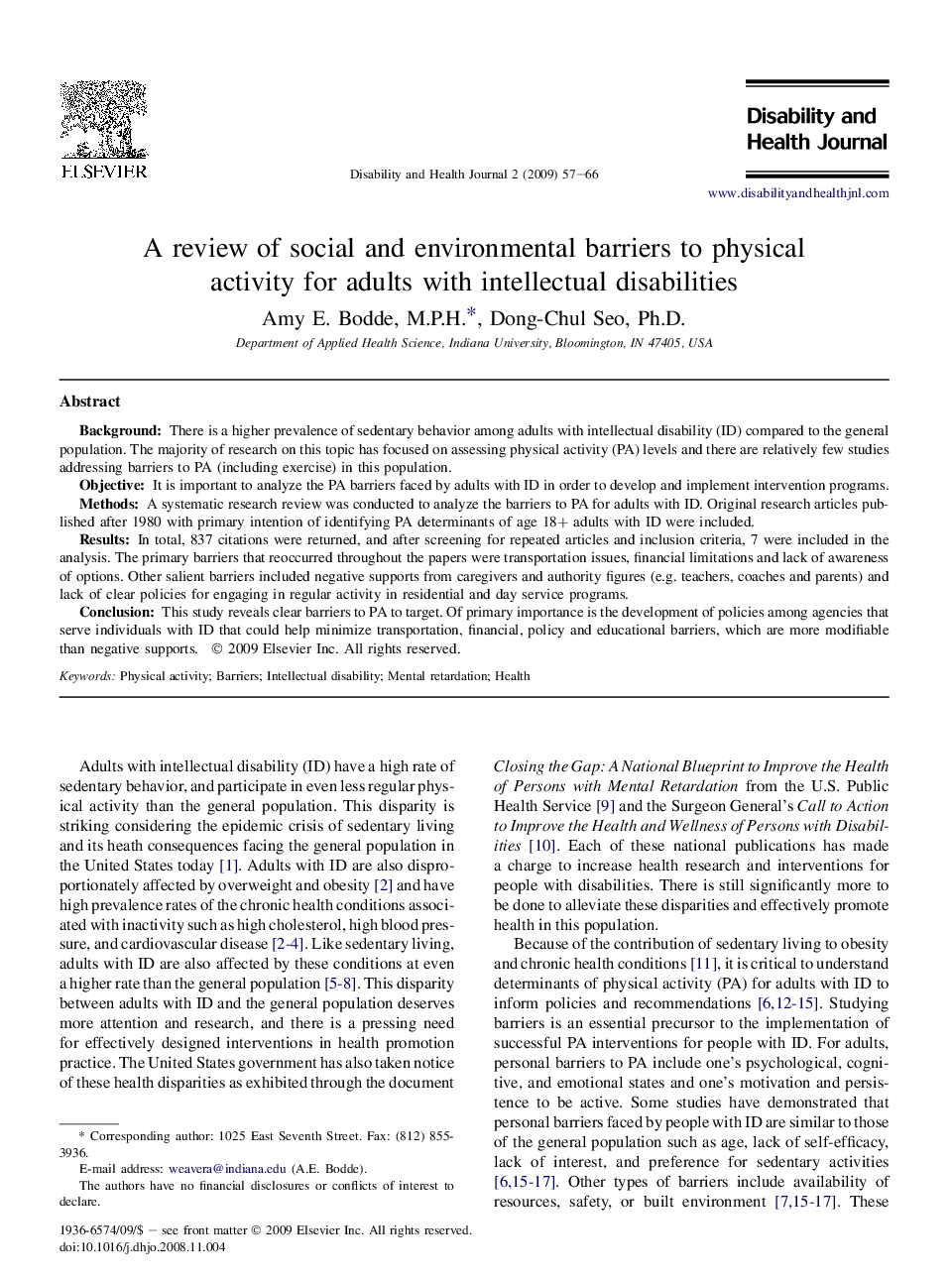| Article ID | Journal | Published Year | Pages | File Type |
|---|---|---|---|---|
| 4197514 | Disability and Health Journal | 2009 | 10 Pages |
BackgroundThere is a higher prevalence of sedentary behavior among adults with intellectual disability (ID) compared to the general population. The majority of research on this topic has focused on assessing physical activity (PA) levels and there are relatively few studies addressing barriers to PA (including exercise) in this population.ObjectiveIt is important to analyze the PA barriers faced by adults with ID in order to develop and implement intervention programs.MethodsA systematic research review was conducted to analyze the barriers to PA for adults with ID. Original research articles published after 1980 with primary intention of identifying PA determinants of age 18+ adults with ID were included.ResultsIn total, 837 citations were returned, and after screening for repeated articles and inclusion criteria, 7 were included in the analysis. The primary barriers that reoccurred throughout the papers were transportation issues, financial limitations and lack of awareness of options. Other salient barriers included negative supports from caregivers and authority figures (e.g. teachers, coaches and parents) and lack of clear policies for engaging in regular activity in residential and day service programs.ConclusionThis study reveals clear barriers to PA to target. Of primary importance is the development of policies among agencies that serve individuals with ID that could help minimize transportation, financial, policy and educational barriers, which are more modifiable than negative supports.
